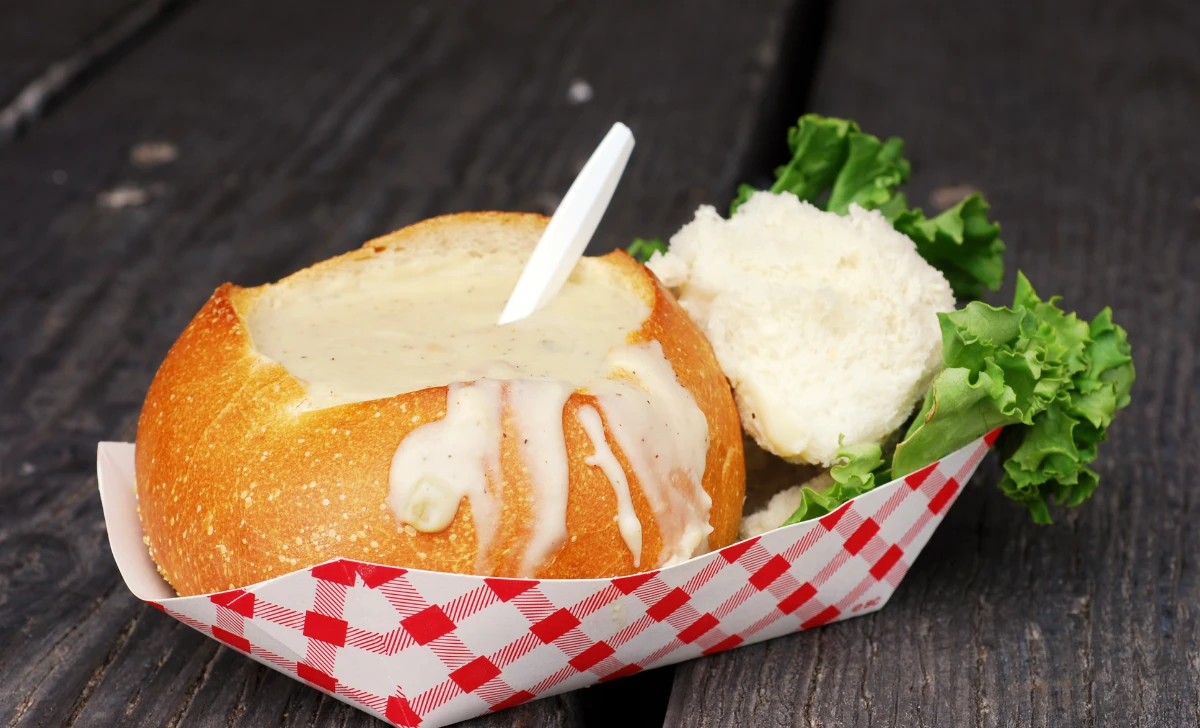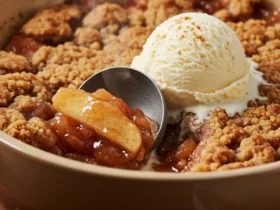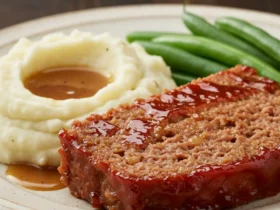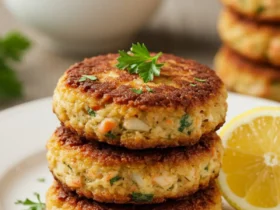Imagine a chilly evening, the salty ocean breeze in the air, and the sound of crashing waves – the perfect setting for enjoying a warm bowl of clam chowder. This delightful seafood soup has been cherished for centuries and remains a beloved dish in coastal communities worldwide. Whether you’re a seasoned chef or a cooking novice, making a delicious clam chowder is a breeze with the right ingredients and a little culinary know-how.
[ez-toc]
History
The history of clam chowder dates back to the early days of American history when it was a staple among fishermen and coastal communities. The dish’s origins can be traced to Native American tribes and European settlers who lived along the Eastern seaboard of North America.
Clam chowder’s roots can be attributed to the native people of the region, who were experts in utilizing the abundant seafood available to them. They would cook clams, along with other ingredients like corn and potatoes, in a simple broth, creating a hearty and nourishing dish that sustained their communities for generations.
When European settlers arrived in America, they adopted the local culinary practices and incorporated their own ingredients and techniques. As coastal communities grew, clam chowder became a popular dish among fishermen and sailors who sought a hearty and filling meal to keep them energized during long voyages at sea.
The earliest documented mention of clam chowder can be found in a cookbook titled “The Virginia Housewife” by Mary Randolph, published in 1824. This cookbook contained a recipe for a simple chowder made with clams, potatoes, and milk.
Over time, different coastal regions developed their own versions of clam chowder, leading to the creation of the three main types we know today: New England, Manhattan, and Rhode Island clam chowder.
New England clam chowder, also known as “Boston clam chowder,” is the oldest and most traditional version. It is said to have been influenced by the Pilgrims and early settlers who used their European cooking methods to create a creamy soup using clams, potatoes, and milk or cream.
As the popularity of clam chowder spread, it became a beloved dish in many coastal cities, each adding their own regional twist to the recipe. Manhattan clam chowder, for example, is believed to have originated in the early 20th century in New York City. It is characterized by its tomato-based broth, which distinguishes it from the creamy New England version.
Rhode Island clam chowder, on the other hand, has its roots in the coastal state of Rhode Island. Unlike its creamy counterparts, this version features a clear broth that allows the natural flavors of the clams to shine through.
In the late 19th and early 20th centuries, clam chowder gained popularity in restaurants and hotels along the Eastern seaboard. It soon became a symbol of coastal cuisine and an essential dish on many seafood restaurant menus.
Today, clam chowder remains a beloved and iconic dish, enjoyed by seafood enthusiasts and food lovers around the world. Its rich history and cultural significance make it more than just a soup; it’s a celebration of coastal heritage and a taste of the ocean in every spoonful. Whether you prefer the creamy goodness of New England clam chowder or the zesty tang of Manhattan clam chowder, one thing is certain – clam chowder will continue to delight generations to come with its delicious flavors and heartwarming charm.
Time
| Step | Time (Approx.) |
|---|---|
| Preparing the Clams | 30 minutes |
| Sauteing the Aromatics | 15 minutes |
| Adding the Potatoes and Clams | 20 minutes |
| Creating the Creamy Base | 10 minutes |
| Simmering to Perfection | 25 minutes |
| Achieving the Right Consistency | 5 minutes |
| Enhancing the Flavor Profile | 5 minutes |
| Garnishing like a Pro | 5 minutes |
| Choosing the Right Bread | 5 minutes |
| Beverage Pairings | 5 minutes |
| Corn and Clam Chowder | 30 minutes |
| Beef and Clam Chowder | 30 minutes |
| Vegan and Dairy-Free Clam Chowder | 30 minutes |
| Storage and Reheating | 10 minutes |
Please note that the times provided in the table are approximate and may vary depending on your cooking skills and equipment. The total preparation and cooking time for clam chowder can range from around 1 hour to 1 hour and 30 minutes.
Ingredients
| Ingredients | 2-Person Serving |
|---|---|
| Fresh Clams | 1 pound |
| Potatoes | 2 medium-sized |
| Onion | 1 small |
| Beef (cut into small pieces) | 2 slices |
| Butter | 2 tablespoons |
| All-purpose Flour | 2 tablespoons |
| Heavy Cream | 1 cup |
| Whole Milk | 1 cup |
| Chicken or Vegetable Broth | 1 cup |
| Thyme (fresh or dried) | 1 teaspoon |
| Bay Leaf | 1 |
| Salt and Pepper | To taste |
| Fresh Parsley (optional) | For garnish |
| Oyster Crackers (optional) | For serving |
Directions
Step 1: Preparing the Clams
- Clean the Clams: Rinse the fresh clams under cold running water to remove any sand or debris. Discard any clams that are open and do not close when tapped.
- Steam the Clams: In a large pot, add a cup of water and place a steamer basket inside. Add the clams to the pot, cover it with a lid, and steam the clams over medium-high heat for about 5 to 7 minutes until they open. Discard any clams that remain closed.
- Remove Clams from Shells: Once the clams are cooked, remove them from their shells. Set aside the clam meat and any clam juice that accumulated during steaming.
Step 2: Sauteing the Aromatics
- Prepare the Vegetables: Peel and finely chop the onion. Dice the potatoes into small cubes, ensuring they are evenly sized for even cooking.
- Cook the Beef: In a large soup pot or Dutch oven, cook the beef over medium heat until crispy. Remove the beef from the pot and set it aside on a paper towel-lined plate to drain excess grease.
- Saute the Onions: In the same pot with the bacon drippings, saute the chopped onions until they become translucent and fragrant.
Step 3: Adding the Potatoes and Clams
- Add Potatoes and Clam Juice: Add the diced potatoes to the pot with the sauteed onions and mix well. Pour in the reserved clam juice obtained from steaming the clams.
- Simmer the Potatoes: Cover the pot and let the potatoes cook for about 10 minutes or until they become tender.
- Add the Clam Meat: Once the potatoes are tender, add the cooked clam meat to the pot and stir gently to combine with the potatoes and onions.
Step 4: Creating the Creamy Base
- Prepare the Roux: In a separate small saucepan, melt the butter over medium heat. Gradually whisk in the all-purpose flour to form a smooth paste, creating a roux.
- Add the Cream and Milk: Slowly pour in the heavy cream and whole milk while continuously stirring the roux. Keep stirring until the mixture thickens and becomes creamy.
Step 5: Simmering to Perfection
- Combine the Base and Clams: Carefully pour the creamy base into the soup pot with the potatoes, onions, and clams, stirring gently to incorporate all the ingredients.
- Add Herbs and Seasoning: Drop in the bay leaf and add the thyme, salt, and pepper to taste. Give the chowder a good stir to ensure the flavors blend together.
- Simmer: Allow the clam chowder to simmer on low heat for about 10 to 15 minutes, giving the flavors ample time to meld.
Step 6: Achieving the Right Consistency
- Check the Consistency: After simmering, check the chowder’s consistency. If it’s too thick, you can add more broth or milk to achieve your desired thickness.
Step 7: Enhancing the Flavor Profile
- Taste and Adjust Seasoning: Take a moment to taste the clam chowder and adjust the seasoning with salt and pepper if needed. Ensure the flavors are balanced and delightful.
- Crisp the Beef:Crumble the cooked beef you set aside earlier and sprinkle it over the chowder. The beef adds a wonderful smoky flavor and a delightful crunch.
Step 8: Garnishing like a Pro
- Final Touches: For an elegant finishing touch, sprinkle some fresh chopped parsley over the clam chowder. The vibrant green color adds a pop of freshness.
Step 9: Serve and Savor
- Serve: Ladle the steaming clam chowder into warm bowls, and pair it with oyster crackers or your favorite crusty bread for a delightful dining experience.
- Enjoy: Savor each spoonful of this luscious clam chowder, filled with the goodness of the ocean and the heartwarming flavors of the coast.
Now, you’re all set to indulge in the heartwarming comfort of a classic clam chowder! Bon appétit!
Equipment Required
Nutrition Information
| Nutrition Information | Per 1 Serving (2-Person) |
|---|---|
| Calories | 450 kcal |
| Total Fat | 28g |
| – Saturated Fat | 15g |
| – Trans Fat | 0g |
| Cholesterol | 110mg |
| Sodium | 850mg |
| Total Carbohydrates | 30g |
| – Dietary Fiber | 3g |
| – Sugars | 5g |
| Protein | 20g |
| Vitamin D | 4.5mcg |
| Calcium | 180mg |
| Iron | 3.5mg |
| Potassium | 580mg |
Please note that the nutrition information provided is an estimate and can vary based on specific ingredients used and serving sizes.
Tips
- Fresh Clams: Whenever possible, opt for fresh clams for the best flavor. Look for littleneck or cherrystone clams, as they are perfect for clam chowder.
- Thoroughly Clean Clams: Rinse the clams thoroughly under cold water to remove any sand or grit before cooking.
- Steaming Clams: When steaming the clams, make sure to discard any clams that do not open after cooking, as they may be unsafe to eat.
- Chop Ingredients Uniformly: Dice the potatoes and chop the onions into evenly sized pieces to ensure even cooking.
- Add Cream Gradually: When creating the creamy base, add the heavy cream and whole milk to the roux slowly, whisking continuously to prevent lumps.
- Avoid Boiling: Once the creamy base is added to the chowder, avoid boiling it, as it can cause the cream to separate.
- Simmer to Develop Flavors: Allow the chowder to simmer on low heat to allow the flavors to meld and intensify.
- Season with Care: Start with a small amount of salt and pepper, as the clam juice and bacon may already add some saltiness. Taste before adding more.
- Garnish Wisely: Fresh chopped parsley adds a burst of color and freshness to the chowder. Crumbled bacon is another fantastic garnish for added flavor and texture.
- Allow Resting Time: If possible, let the chowder sit for a few minutes after cooking to allow the flavors to harmonize even more.
Pros & Cons
| Pros | Cons |
|---|---|
| ✅ Rich and Creamy Flavor | ❌ High in Calories |
| ✅ Delightful Coastal Charm | ❌ High in Saturated Fat |
| ✅ Hearty and Satisfying | ❌ Contains Cholesterol |
| ✅ Versatile and Adaptable | ❌ Moderately High Sodium |
| ✅ Comforting and Nourishing | ❌ Not Suitable for Vegans |
Conclusion
In conclusion, clam chowder is a timeless coastal classic that brings the essence of the ocean to your table with every spoonful. Its rich and creamy texture, paired with the natural sweetness of clams and savory aromatics, creates a heartwarming dish that is both comforting and nourishing.
Whether you’re an experienced cook or a culinary novice, preparing this delightful clam chowder is a breeze with the step-by-step instructions and helpful tips provided. The recipe is versatile, allowing you to customize it to your taste preferences, whether you prefer the traditional New England style or want to try exciting variations like bacon and corn-infused chowder.
With each pot of clam chowder, you’ll embark on a culinary journey that celebrates the coastal heritage and culinary traditions. Share it with a loved one for a cozy dinner or savor it alone for a moment of pure indulgence.
So, why wait? Head to your kitchen, don your apron, and let the aroma of simmering clams and creamy goodness fill your home. Trust me; the effort will be well worth it when you taste the delightful creation that awaits you. Go ahead, try out this fantastic clam chowder recipe, and experience the heartwarming charm of the coast in every spoonful. Bon appétit!
Facts
- Fact 1: A Dish from the Seas 🌊
- 🦪 Clam chowder’s history dates back to the early days of American coastal communities. Native Americans and European settlers living along the Eastern seaboard utilized the abundance of clams in their culinary creations, giving rise to this beloved seafood soup.
- Fact 2: A Chowder for All Seasons 🍂❄️🌸
- 🍲 Contrary to popular belief, clam chowder is not just a winter warmer! In coastal communities, it is enjoyed year-round, adapting its flavors to each season. While a creamy chowder may soothe chilly winter nights, a light and vibrant clam chowder with fresh tomatoes brings coastal delight in the summer.
- Fact 3: A Tale of Two Cities 🏙️🗽
- 🥣 The rivalry between New York City and Boston extends to their clam chowder preferences! Bostonians take pride in their creamy New England clam chowder, while New Yorkers relish their tangy tomato-based Manhattan clam chowder. The debate of “white vs. red” has been simmering for generations!
- Fact 4: Chowder by the Gallon 🏺👨👩👦
- 🥣 Ever wondered where the term “chowder” comes from? It traces its roots to the Latin word “calderia,” meaning a cooking pot or cauldron. In the past, chowders were often prepared in large pots and served communally, making it a dish for gatherings and celebrations.
- Fact 5: A Luscious Trip Down Memory Lane 🚢🗺️
- 🌟 Clam chowder has made its way into pop culture and history alike! It gained popularity as a comforting meal aboard ships during long sea voyages. Notably, it was featured in the renowned novel “Moby Dick,” where it warmed the hearts of sailors traversing the open seas.
FAQ’s
Can I use canned clams instead of fresh clams for the clam chowder?
Yes, you can use canned clams as a convenient alternative to fresh ones. However, fresh clams provide a more authentic flavor and texture. If using canned clams, drain and rinse them before adding to the chowder.
Can I make clam chowder ahead of time and reheat it later?
Absolutely! Clam chowder can be made in advance and reheated before serving. Store it in an airtight container in the refrigerator for up to 2 days. Reheat gently on the stovetop, stirring occasionally.
Is clam chowder suitable for freezing?
While it’s possible to freeze clam chowder, the texture may change slightly upon thawing and reheating. For the best taste and consistency, consume it fresh. If freezing, store in an airtight container for up to 2 months.
What’s the difference between New England and Manhattan clam chowder?
New England clam chowder has a creamy white base made with cream or milk, while Manhattan clam chowder features a tomato-based broth with a red color. New England chowder is creamier and richer, while Manhattan chowder is lighter and more tomato-forward.
Can I use almond milk as a dairy alternative in clam chowder?
Yes, you can substitute almond milk or any other plant-based milk for the dairy in clam chowder to make it vegan or lactose-free. Keep in mind that the flavor may vary slightly from the traditional version.
What’s the best type of potatoes to use for clam chowder?
Russet or Yukon Gold potatoes work well for clam chowder due to their starchy texture, which helps thicken the soup. You can also use red potatoes if you prefer a firmer texture.
Can I add other seafood to the chowder, like shrimp or crab?
Absolutely! Feel free to get creative and add other seafood, such as shrimp, crab, or lobster, to the chowder for a delightful seafood medley. Adjust cooking times accordingly to ensure all seafood is cooked through.
How can I make clam chowder gluten-free?
To make gluten-free clam chowder, use a gluten-free flour alternative (like rice flour or cornstarch) in place of all-purpose flour to create the roux for the creamy base.
Can I use vegetable broth instead of chicken broth for a vegetarian version?
Yes, you can substitute vegetable broth for chicken broth to make the chowder vegetarian. The vegetable broth will still impart a savory flavor to the dish.
What type of bread is best to serve with clam chowder?
A crusty sourdough or French baguette is an excellent choice to serve with clam chowder. The bread’s hearty texture pairs wonderfully with the creamy soup, allowing you to soak up every last bit of goodness.












Leave a Review